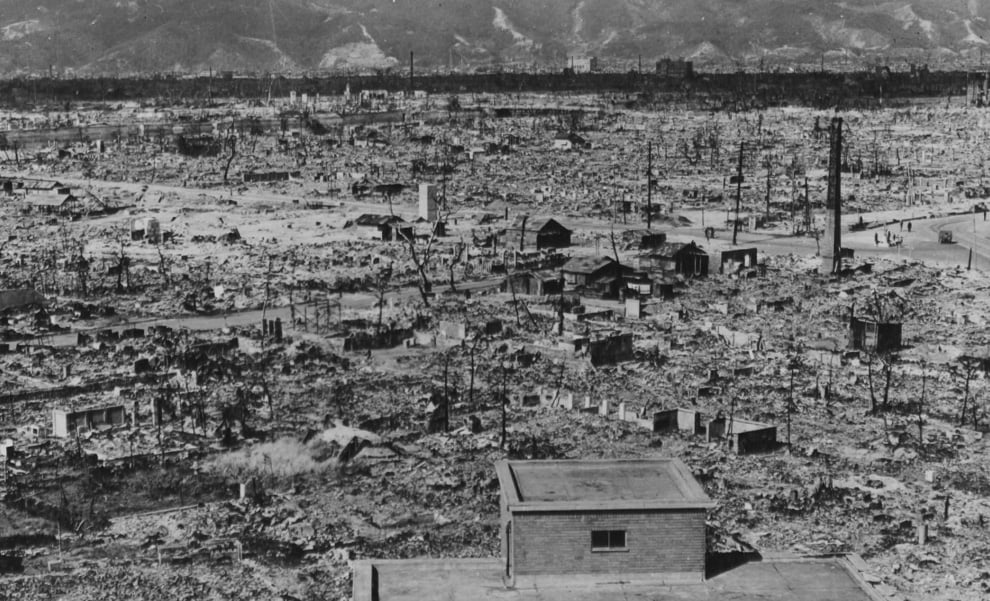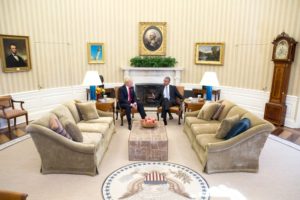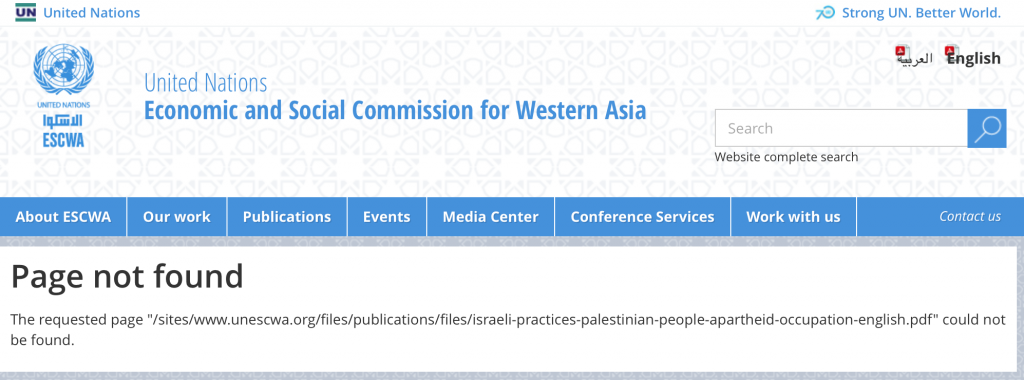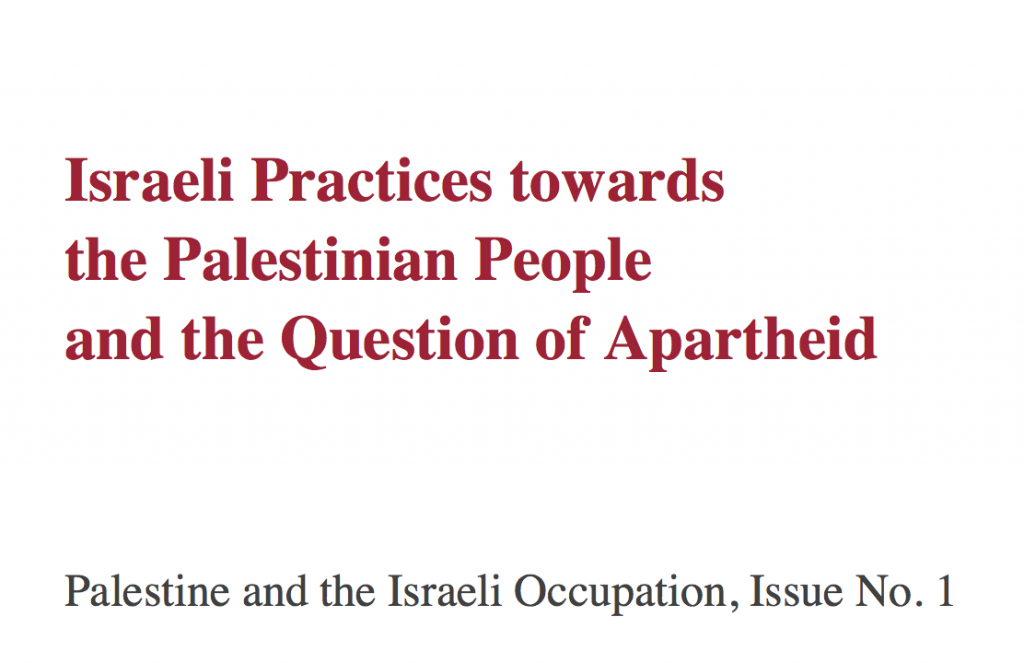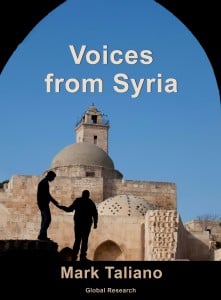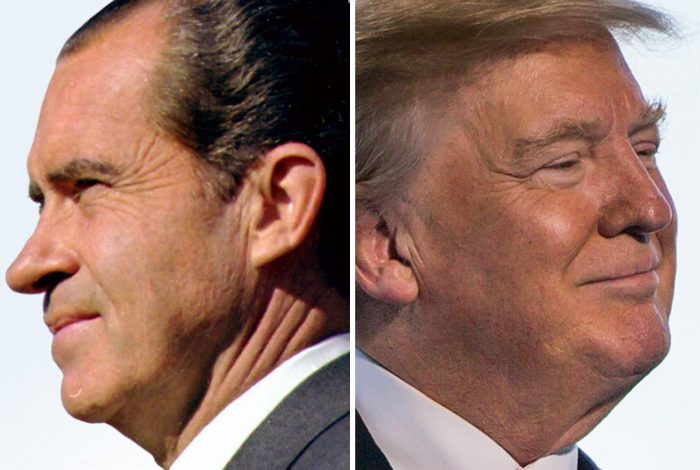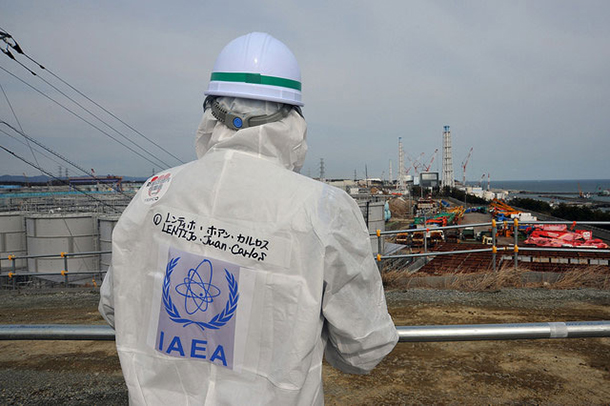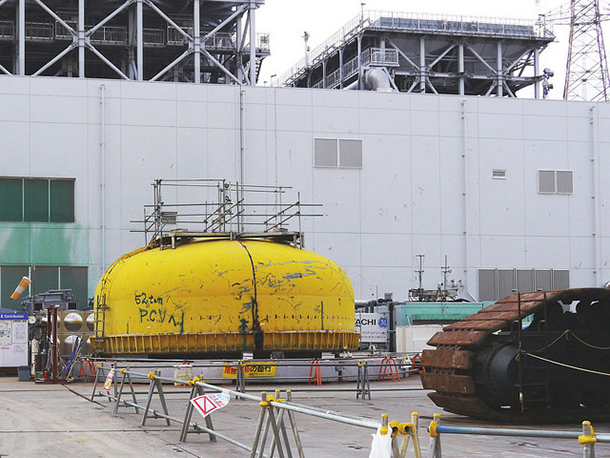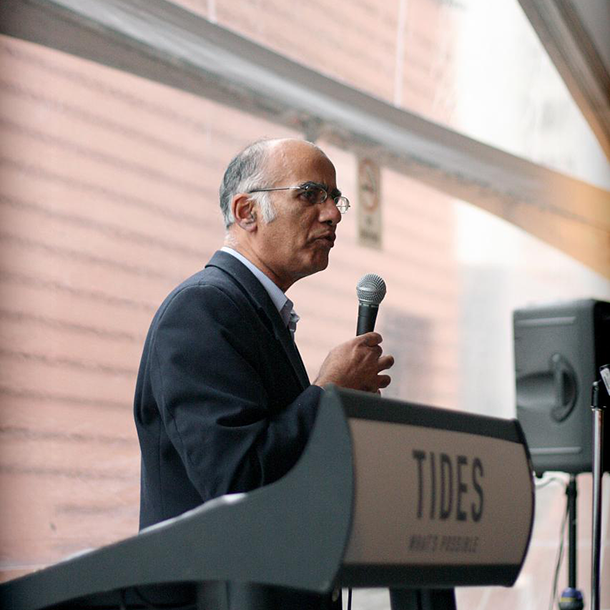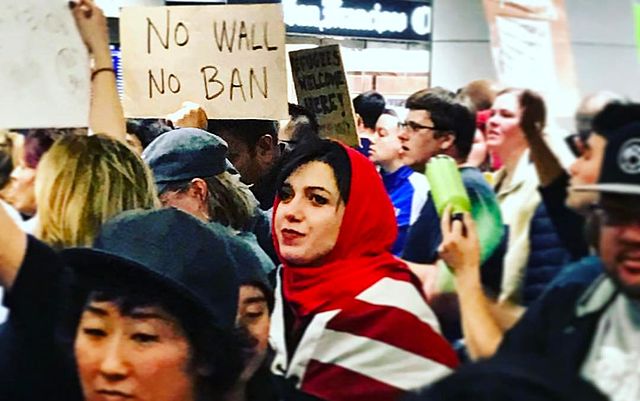War has indeed become perpetual and peace no longer even a fleeting wish nor a distant memory. We have become habituated to the rumblings of war and the steady drum beat of propaganda about war’s necessity and the noble motives that inspire it. We will close hospitals. We will close schools. We will close libraries and museums. We will sell off our park lands and water supply. [1] People will sleep on the streets and go hungry. The war machine will go on.
What are we to do?
Randolph S. Bourne was born in 1886 in the town of Bloomfield, New Jersey, to an aristocratic family of proud New England heritage. The family attended the town’s first Presbyterian Church and raised their son on a Bible verse a day. Bourne was expected to honor these auspicious beginnings by attending college and then law school and establishing himself among the scions of wealth and respectability.
Bourne had other ideas. As a young child his body was twisted with a disease that left him with a double curvature of the spine that eventually retarded his growth. A birth injury had disfigured one side of his face, producing an impression in adulthood that inspired Theodore Dreiser to refer to him as “that frightening dwarf.“ The flu epidemic of 1918 took Bourne at the tender age of thirty-two.
In his brief tenure, that “frightening dwarf“ became one of the most articulate, independent and outspoken intellectuals of his generation, perhaps despite, perhaps because of his social and physical handicaps. Bourne had the audacity to put himself in opposition to “The Great War, “ “The War To End All Wars, “ i.e., World War I, as bodies on both sides were being torn to shreds so the world might be “safe for democracy.” His independent mindedness cut him off from most of his intellectual peers, including such luminaries as Charles Beard and John Dewey of Columbia University. In many ways his writing was an attempt to make sense of what he saw as a betrayal of the truth by men for whom he had once had the deepest respect.
Perhaps Bourne’s most noteworthy achievement is an essay entitled, “The State.” Written in 1917, in the midst of war, Bourne takes an analytic look at the causes of war and its social consequences. He begins by establishing the basic concepts necessary for understanding the political functioning of a particular society. He speaks of “country, “ “government,“ “nation “ and “State.“ Each of these concepts has a meaning with specific consequences for domestic and international affairs.
Country is a plot of land inhabited by people who speak the same language — more or less — and share some common values, or as Emile Durkheim might say, “a collective common consciousness.” Country is the mountains, valleys, plains and rivers, the factories, golf clubs and bowling allies. Country expresses itself via its culture, its art, literature and political practices. “Country is a concept of peace, of tolerance, of living of letting live.” (Bourne, 68) It is loosely organized and diverse in its beliefs.
Government is the means by which a country organizes and structures itself. It is the means by which a society takes control of itself or fails to. Government divides the country into smaller units for purposes of administration and representation. Government can be highly centralized or it can rely on the strength and independence of the localities. The form government takes plays a critical role in determining the nature of the society and the character of the citizens who live under its dominion.
Nation is country taking consciousness of itself. Nation is country with an identity. “I am an American” has a certain meaning and significance when uttered by someone occupying a certain plot of land, especially when taken in the context other plots of land, occupied by other peoples. Nation is a benign concept. There can be national pride without any belligerence attached to it.
Unlike country, nation and government, State exists only under certain circumstances. And those circumstances are the circumstance of war. “With the shock of war,” says Bourne, “the State comes into its own….” (Bourne, 66) Without war the State disappears and reverts to being a nation, which is another way of saying, “War is the health of the State.” (Bourne, 71) Or, in the words of Heinrich von Treitshke, “The concept of the state implies the concept of war, for the essence of the state is power.” (Popper, 276)
State is not a reality. It is an artifice, a myth, an ideology that is superimposed upon a social reality that it flouts and subsumes by means of manipulation and propaganda. Take away the State and country/nation are there intact. Take away country/nation and state vanishes. It has no existence of its own. One country does not go to war against another. “It is the country organized as a State that is fighting, and only as a State would it possibly fight.” (Bourne, 82-83) States make war on each other, not countries, not peoples.
German philosopher Georg Wilhelm Friedrich Hegel (1770-1831) was a big fan of the Warrior State. Here he is inveighing against the “nation” as “rabble.”
The aggregate of private persons is often spoken of as the nation. But such an aggregate is a rabble, not a people; and with regard to it, it is the one aim of the state that a nation should not come into existence, to power and action, as such an aggregate. Such a condition of a nation is a condition of lawlessness, demoralization, brutishness [italics in original].” (Popper, 268)
As this quote makes clear, “Nation” and “State” are not one and the same and that in fact the two are mutually exclusive. State is government in the service of war, a society organized for the purpose of killing. Nation is a government organized for civic living. State is a killing machine, a parasite, a leech sucking the life out of government.
Three kinds of war and how they are financed
Basically there three kinds of wars: land wars, word wars and wars of extraction.
Land war
“I want that plot of land.” “Well, you can’t have it. It doesn’t belong to you.” “I am going to take it anyway.” War. Land is about power, personal power. Religion and reasons of State are simply pretexts for justifying the killing.
Feudal society was built around land wars. The king makes war and rewards his knights with land. The more war that is made the more land that is acquired by the king and the more he has to pass along to the knights that made war with him. And so land gets distributed and redistributed and eventually there is a land holding aristocracy.
Word war
“We believe the moon is made of green cheese.” “We believe it is made of solidified yogurt. And if you don’t change your mind, we are going to kill you and all your followers.” War.
In 1095, the Catholic Church in the person of Pope Urban II introduced word wars with his first crusade. The “infidels” in far off lands needed to be crushed. The “Holy Land” needed to be retaken by brute force. The crusaders — many were wealthy knights — were encouraged to hand over their land and wealth to the Church before leaving on a journey from which many did not return. With warring lords out of the picture and their wealth in Church coffers, the Church expanded its power and influence while crusaders were giving their lives over semantic differences.
In the south of France, there was a religious community known as the Cathari or Albigensians. There were a peaceful people who worshipped a god of love and peace. They believed that power and love cannot co-exist and specifically renounced the principle of power. When they persisted in living out their beliefs, Pope Innocent III (sic) saw to it that they were slaughtered, with a loss of life estimated to be as high as a million.
The 16th century “Wars of religion” are among the most odious “Word Wars” to date. Hundreds of thousands were killed. Barbarism reached new heights for the time. Who has the word, has the power.
War of Extraction
“We need oil to fuel our jets so we can bomb you into oblivion.” “But that oil is under our sands.” “We are going to take it anyway. And don’t try and stop us.” War. Endless war. War that becomes a word war in the name of “democracy” so the folks back home can be nudged into supporting the war with their lives and money.
Wars of extraction are a modern invention, a bi-product of the industrial revolution. Making war in modern times consumes enormous amounts of natural resources. When a country like the U.S. begins to run out of what it needs it seeks replenishment elsewhere.
Since its founding the United States has been at war for 214 out of 235 calendar years, which makes for one Healthy State! [2] According to retired lieutenant colonel (USAF) William J. Astore, “War Is The New Normal.” (TomDispatch, February 1, 2015) He is referring to the period since September 11, 2001, but of course there is nothing “new” about this normal. War has been “normal” from the get go. It is estimated that since WWII, US-led and instigated wars and conflicts around the globe have killed 35 to 40 million people; 10 to 12 million alone since 9/11. (Koenig, Global Research, November 3, 2015)
War depletes government. There is little or nothing of financial or social resources left over for addressing the needs of the citizenry. Cultural and intellectual life dwindle. “If the State’s chief function is war, then the State must suck out of the nation a large part of its energy for its purely sterile purposes of defense and aggression….The calling away of energy into military pursuits means a crippling of the productive and life-enhancing processes of the national life.” (Bourne, 81)
Financing war
As wars evolved so did the political structures necessary to feed them. In the Middle Ages when the Lord of the manor sought to make war he would call upon his knights to supply the troops and to arm them. These were mostly local skirmishes on a relatively small scale. As the violence of war became more extensive and more far-flung, as the machines of war became more complex and sophisticated, as the armies required more and more troops, there was an ever-increasing demand for more funds, which is where taxation comes in.
The population at large would be taxed from the upper echelons of the knighthood, which eventually became the nobility, all the way down to the sustenance farmer and the humble artisan who resided in town. The nobility would bear the heaviest burden since they had the most to offer. Each new military adventure required yet more revenues and a rise in taxes. [3] Predictably, there was increasing hostility among the nobility and the townspeople who lived under an ever-greater tax burden. There would be armed resistance that would be successfully repressed, leading to an even more centralized and powerful State.
When revenues from taxation proved insufficient, the State would turn to borrowing. Initially the borrowing was from wealthy individuals, eventually these wealthy individuals balked, especially as the State was unable to repay its loans in a timely fashion. Banks were formed.
Banking activities can be traced all the way back to 2000 B.C. when farmers and traders needed money to support them in their effort to bring their product to market from one city to the next. Modern banking began to emerge in the Renaissance in wealthy Italian cities like Florence, Venice and Genoa and was dominated then — as it is now — by wealthy banking families. In 14th century Italy it was the Medici family. Today it is the Rothschilds and the Rockefellers.
In 1695, William III of England needed funds to rebuild his navy. His credit was so poor that no one would lend the money he needed. His solution was to form the Bank of England, perhaps the first Central Bank. The bank would lend money to the government, issue currency and set interest rates. It was established as a private institution whose board members were not to be revealed. Hamilton used this model in setting up the “Bank of the United States,” which evolved into today’s Federal Reserve Bank.
As war became more frequent and was conducted on an ever-grander scale, banks played a greater and greater role, making banking families critical members of the warrior class. Currently, in the year 2017, banks not only fund the wars, they have become the engines of war. War is good for business, so let’s make war. In WW II, the Rothschilds funded both sides. Currently, the United States spends trillions a year on war. Its national debt is at $16.3 trillion dollars. In 2015 the cost for servicing that debt was in excess of $405 billion, most of which was a consequence of borrowing money to make war. [4]
With all of the money coming in from different sources, there is a lot of bookkeeping and accounting that must take place to keep track of and enforce the collecting of funds from taxpayers and banks. Here is where bureaucracy comes in. How is one going to go about collecting those taxes, keeping track of who pays and how much, develop a means for compelling compliance? One needs personnel, more and more. Larger and more costly wars require more and more money and the bureaucracy necessary to supply and manage that money. Currently, in the United States, the IRS has a payroll of more than 82,000.
The Pentagon with 6,000,000 employees is the largest single employer in the world. The arsenal needs to be restocked, arms need to be invented and procured, strategic decisions need to be made. Much of this takes place in the Pentagon, which, in essence, is the government. The Pentagon sucks up money at an astounding rate and spends it with reckless abandon. It is accountable to no one. There is very little in our social, political, economic, agricultural, cultural — even personal— life that the Pentagon doesn’t impinge upon.
Needless to say, the warrior class has little love for Mother Nature, and little concern for her failing eco-system. Their god is Thanatos, the god of death. Happily, they would oversee the extinction of the human species.
The State in control: How we are kept in line
The State has an internal structure, and that structure is derived from its primary function, making war. In discussing the nature of the State, and its relation to war, Porter speaks of “an iron triangle of arms, capital, and bureaucracy” (Porter, 58). I would add three elements, the warrior, the banker and the propagandists. I guess that gives us an iron hexagon.
The State started as monarchy and morphed into oligarchy at the end of the 18th century, probably because the aristocracy had been used up as a source of funding. The State needed to tap the middle class, which meant a form of government that would “include” — i.e. seem to include — them, hence the bastardized use of the word, “democracy.”
Although it is obvious, wars do not occur spontaneously, the way crocuses rise in springtime. Behind every war there is a warrior or several warriors or a class of warriors. There are the visible oligarchs — the men and women we put in office — and the invisible oligarchs, the deep state, George Soros, the Rothschild family, the Rockefeller family, the Koch brothers, people like Karl Rove, Henry Kissinger, Zbigniew Brzezinski, Paul Wolfowitz, someone like Thomas Barnett, “military geostrategist,” an academic or two. But it doesn’t really matter who they are or if they are masons or Illuminati. What matters is that they have the power and we don’t.
The State — i.e. the warrior class who run the State — is a law unto itself, and is accountable to no one. It is above and beyond the morals of civic virtue. It only does wrong when it fails to fulfill its role as State, which is †o say make war.
The “Great Men” of history are not to be judged by the same standards we apply to civic society. The “Great Men” are “great” because they are efficient killers and for that we should honor them, not judge them. As Mao Zedong put it, “Political power grows out of the barrel of a gun.” Who holds the gun, holds the power.
Peace, on the other hand, that brief interlude between wars, is government in the service of the civic community. Economic needs and social needs are the primary concern. Cultural and intellectual life flourish. The energy and resources that would have been spent in killing are devoted to nourishing life. There is no need for lying. There is no need for propaganda. Society is being called upon to act in its own best interests. There is nothing to hide.
It was Thomas Hobbes’ view — Leviathan (1651) — that the State — the mighty monster — is our savior and protector. Without it we would descend into a state of nature. “Without a common power to keep them all in awe, they are in that condition which is called war; and such a war as is of every man against every man”. Life in this state of nature is “solitary, poor, nasty, brutish, and short.”
One can argue that Hobbes has it all backwards. It is the Leviathan — the State — that is reducing us to this primitive, barbaric State of Nature by its endless wars. The State is not protecting us from the State of Nature as Hobbes predicted. Instead, by its endless war, it is reducing us to a State of Nature.
Fear and obedience
The State requires obeisance. It needs to get the country to do its bidding, which is to say it needs to get the population to accept and support the sacrifice that war entails. There are economic and social sacrifices. One will even be asked to sacrifice ones life.
Enter fear, the primary means by which the state retains its control. We are to be maintained in a constant state of anxiety. We are to feel weak and insecure, uncertain about what could happen next, overwhelmed with information about various germs, insects, plagues, infiltrations and assaults. Says Chris Hedges, “Terror, intimidation and violence are the glue that holds empire together.”
The enemy is everywhere and anywhere. He is ruthless and barbaric and will stop at nothing, which is why we need an all powerful, all knowing State to protect us. We see a poster on the subway, “If you see something, say something.” There is an image of a package underneath a seat. We are to assume it is a bomb that will blow us to smithereens. When we see such an object we are to inform a police officer or an employee of the MTA. There is an announcement that repeats the same message and ends, “Stay alert and have a safe day.”
There is a television program entitled “Homeland.” It is about a returning soldier who has spent eight years in captivity. The CIA believes he has gone over to the other side and is connected to a terror plot that is to be carried out on American soil.
There is the “Department of Homeland Security.” Its vital mission is “to secure the nation from the many threats we face,” “safeguard the American people, our homeland, and our values.” The Department employs 240,000 people in its determined effort to keep us safe.
And of course there is the NSA (National Security Agency) employing something like 50,000 experts trained to keep us safe, the CIA (Central Intelligence Agency) with a work force of about 22,000 whose job it is to detect overseas threats to our domestic tranquility and the FBI (Federal Bureau of Investigation) whose job it is to root out terrorists on our home territory. They employ around 35,000 agents and the DIA (Defense Intelligence Agency) around 17,000. That adds up to around 365,000 men and women devoted to keeping us safe and secure.
We need constant reminders of who the enemy is and what he looks like. He is Muslim. He is wily. He is ruthless. He looks different from us and prays to a different god. He frightens us and we are grateful for the 365,000 men and women devoted to keeping us safe. Every so often there is an “event” in which it is claimed that a Muslim is responsible for loss of life. Conveniently there is a passport left behind identifying exactly which Muslim it was who committed the act of terror.
There is war over there, somewhere. We learn what the enemy is capable of. There are gory images and stories of beheadings and torture. So the enemy is demonized. The mission is glorified, often at the expense of the truth.
One example among many is what happened early in the first assault on Iraq, known as the Gulf War, when George I was President. On October 10, 1990, a 15-year-old Kuwaiti girl, known only by her first name of Nayirah, testified before the “Human Rights Caucus,” not a legitimate congressional committee. She alleged that she had seen “Iraqi soldiers come into the hospital with guns, and go into the room where … babies were in incubators. They took the babies out of the incubators, took the incubators, and left the babies on the cold floor to die.” (Stauber and Rampton)
It turns out that “Nayirah” was daughter to the Kuwait’s Ambassador to the U.S. and that the story was a fabrication fed to “Nayirah” by the Lauri Fitz-Pegado, vice-president of Hill and Knowlton, the country’s largest public relations firm. One can only assume that similar stories have similar origins.
Thus, compliance with the State’s program of war requires constant lying by the State and the media that speak for it. It is doubtful that any people would go to war if they knew the whole story about the key figures involved and what their true motivations and values were and what the consequences were for the country being invaded. Truth is an enemy of the State. The State needs the lies, even more than it needs war. Take away the lies and the State disappears.
Obviously, free, independent, critical thinking is anathema to the State. It must control the word and will crush anyone who reveals the truth. Chelsea (Bradley) Manning was put in prison for releasing documents claimed to be detrimental to the war effort as well as a video showing a helicopter gunship gunning down two Reuters reporters and two men helping to evacuate the wounded.
In order to be believed and to be beyond question as to its integrity, the State must inspire devotion to the State qua State. This devotion goes by the word “patriotism.” Its symbolic representation is the flag, “primarily the banner of war.” (Bourne, 87) This belief in the State is no different from belief in God. And you would no more doubt or question the State than you would doubt or question God. To do so is blasphemy.
Anything that has a mind of its own is a menace to the State. The individual, qua individual, must disappear. The individual is merged with the mass and conforms to herd-like behavior that is controlled from above. This is life in the State.
Propaganda
He who has the word has the power and the license to kill on behalf of his countrymen, which is why lying — propaganda — is such a key ingredient in sustaining the modern State and gaining the support of the populace. “The State thus becomes an instrument by which the power of the whole herd is wielded for the benefit of a class.” (Bourne, 91)
In the good old days barbarians could go out on a killing spree without accounting to anyone or in any way explain or justify their actions. In 1494 Charles VIII of France invaded Italy. There were no news stories giving it just the right spin. There were no protests in the streets. In the 21st century we are more “civilized,” i.e. we need to be soothed into acquiescing to the gratuitous violence committed in our name in far away lands, which is why propaganda plays such a key role in holding the State together in its primary mission of making war.
In 1928, Edward Bernays (1891- 1995)— nephew to Sigmund Freud — wrote a book entitled, “Propaganda.” His aim was to convince the reader that propaganda was a good thing. Since the masses don’t really know what they want, wouldn’t it be easier for everyone if rulers decided for them and then made it seem as if they had decided for themselves? “If we understand the mechanism and motives of the group mind,” Bernays asks rhetorically, “is it not possible to control and regiment the masses according to our will without their knowing about it?” (Bernays, 71) Not only is it possible, it is desirable. The manipulation of the masses “is an important element in democratic society,… if [we] are to live together as a smoothly functioning society.” Every aspect of our living is determined and controlled by those “who pull the wires which control the public mind.” (Bernays, 37)
This has all the trappings of the totalitarian State. Our very soul has been hijacked and appropriated by the State for purposes beyond our ken and will. The media are the most obvious means of manipulation and serve their purpose quite well, but they are not alone. Academics, movie and TV producers all conspire to control what we think is reality, which we then respond to as our State rulers desire.
There is a barrage of violence that makes us feel small and vulnerable. There are constant warnings about approaching danger. Most of what we hear about the wars being waged by the State in our name is pure fabrication. As but one small example, New York Times Pulitzer Prize winner Judith Miller fed the public a pack of lies about Sadam Hussein and “weapons of mass destruction,” which subsequently were thoroughly discredited, and which the Times retracted. The harm had been done.
Initiated in the 1950’s, “Operation Mockingbird” was a secret campaign by the CIA to control media. The organization recruited leading American journalists into a network to help present the CIA’s views. Student and cultural organizations were CIA funded. Magazines were used as fronts. According to Deborah Davis in Katharine the Great, (A biography of Katherine Graham, one-time owner of the Washington Post) “By the early 1950s, Wisner [head of covert action for the CIA] ‘owned’ respected members of The New York Times, Newsweek, CBS and other communications vehicles.” (Davis, 137-138) The NSA (National Student Organization), a confederation of college student governments and the literary journal Encounter were funded by the CIA.
This is but a very small sample of the cultural corruption that prevails in our society in the service of the State. Just about every resource we think we can count on for honest information is being controlled by the State for the sole purpose of advancing its agenda, i.e. War. Should we be suspicious, nay paranoid, in our disbelief about what we are being told? I am afraid so.
The welfare state
One way to way to get us to submit and obey is to show us a little kindness. Although it might seem oxymoronic to say so, as Porter points out, the Welfare State is one of the attributes of the Warfare State. “Curious,” you say, “how did that come about? Why would the warrior class have any interest in our well-being?” Truth is they don’t. However, they are practical minded people. In the last quarter of the 19th century there was a good deal of social unrest. Workers wanted better working conditions and better pay. They were organizing. In Paris there was an uprising of radical socialists. The Paris Commune took control of the government and ruled from March 18, 1871 to May 28 1871. The official French government responded with a siege that resulted in 15,000 – 20,000 deaths.
The wise thing to do for the ruling class was to co-opt the unrest by addressing some of the workers’ needs. What about returning soldiers? Shouldn’t their needs be addressed? We are asking them to risk their lives. If we want their cooperation we had best take care of their health and the health of their families. As Porter points out, “In general, the voice of the people is heard loudest when governments require either their gold or their bodies in defense of the state” (Porter, 10).
The collectivism that socialism advocated and the imperialistic doctrine of the State found a common meeting ground. Both required a strong central State to realize their goals. The imperialists reasoned that “domestic peace would facilitate expansion abroad” (Porter, 158). Germany, under Otto von Bismarck — the “Iron Chancellor” — was fast becoming the most industrialized country in the world. Bismarck, who considered humanitarian impulses to be “sentimental rubbish” (Porter, 159) nonetheless, for practical reasons, became the Welfare State’s standard-bearer. In 1883 he secured passage of compulsory sickness insurance for workers; in 1884 and 1885, an accident insurance plan; in 1889, a comprehensive Old Age Insurance Law. By the turn of the century Germany had the most advanced welfare system of any country in Europe.
Strange bedfellows indeed, war and welfare. Yet they seem to have gotten on quite well. It would never occur to us that we owe our welfare benefits to the killing of innocents abroad. Yet that seems to be the case. State does what is expedient when it comes to serving its ultimate cause: war. It cannot be otherwise.
But as we see in Part 2, there is an alternative to State and that is the Nation in the form of a Federated Government, a government based in local needs and local initiatives, a government designed to serve the common good.
The above essay is part I of six part analysis
1. War and the health of the State: What causes war
2. Federated governments: The Nation vs. the State
3. Origin of the State: Barbarians at the gate
4. End Game: War goes on
5. Critical Thinking: A bridge to the future
6. Deconstructing the State: Getting small
Sources
Benjamin Barber, Strong Democracy: Participatory Politics for a New Age.
Frank Barlow, The Feudal Kingdom on England 1042-1216.
Edward Bernays, Propaganda.
Ellen Brown, The Public Bank Solution: From Austerity to Prosperity.
Smedly Butler, War Is A Racket.
James Carroll, House of War.
Gearoid O Colmain, “The Weaponisation of the Refugee,” Dissident Voice, January 20, 2016.
Rob Cooper, “Iceland’s former Prime Minister found guilty over country’s 2008 financial crisis but will avoid jail,” Daily Mail, April 23, 2012.
C.S., “Constitution Society,” Andrew Jackson, July 10, 1832.
Deborah Davis, Katherine The Great.
Thomas J. DiLorenzo, The Real Lincoln.
M.I. Finley, The Portable Greek Historians.
F.P. The Federalist Papers. Ed. Clinton Rossiter.
Mark H. Gaffney: “9/11: The Evidence for Insider Trading,” May 25, 2016: ICH (Information Clearing House).
GPF (Global Policy Forum,) “War and Occupation in Iraq,” Chapter 2.
Ramachandra Guha, India After Gandhi.
Victor David Hanson, Carnage and Culture.
Chris Hedges, “The American Empire: Murder Inc.” Truthdig, January 3, 2016.
Georg Wilhelm Friedrich Hegel, The Philosophy of History (Dover, 1956).
J. Christopher Herold, The Age of Napoleon.
Karl Hess, Community.
Peter Hoy, “The World’s Biggest Fuel Consumer,” Forbes, June 5, 2008.
J.H. Huizinga, Dutch Civilization in the 17th Century.
Peter Koenig, “Towards a Foreign Imposed “Political Transition” in Syria?” Global Research, November 3, 2015.
John Macpherson (1899). Mental affections; an introduction to the study of insanity.
Patrick Martin, 16 April 2003, wsws.org.
Edgar Lee Masters, Lincoln The Man.
Gaetano Mosca, The Ruling Class.
Ralph Nader, “Uncontrollable — Pentagon and Corporate Contractors Too Big to Audit,” Dandelionsalad, March 18, 2016.
Thomas Naylor and William H. Willikmon, Downsizing the U.S.A.
Karl Popper, The Open Society And Its Enemies.
Simon Schama, The Embarrassment of Riches: An Interpretation of Dutch Culture in the Golden Age.
John Stauber and Sheldon Rampton, “Lies Damn Lies and the Public Relations Industry.” (Web)
Herbert J. Storing, The Anti-Federalist: Writings by the Opponents of the Constitution, edited by Herbert J. Storing.
Jay Syrmopoulus, October 15, 2015, “Iceland Just Jailed Dozens of Corrupt Bankers for 74 Years, The Opposite of What America Does.” Read more at http://thefreethoughtproject.com/icelands-banksters-sentenced-74-years-prison-prosecution-u-s/#UHP3qHr1WIAuRFSs.99.
“The Economic Value of Peace, 2016” (PDF) Institute for Economics and Peace.
Washington Blog, February 23, 2015 “ICH”(Information
Clearing House) http://www.informationclearinghouse.info/article41086.htm
Max Weber, Political Writings.
John W. Whitehead, March 29, 2016, “From Democracy to Pathocracy: The Rise of the Political Psychopath,” Intrepid Report, April 1, 2016.
Wikipedia, “Energy usage of the United States military.”
Wikiquote, Woodrow Wilson, Federal Reserve Act of 1913.
Sheldon Wolin, Democracy Incorporated: Managed Democracy and the Specter of Inverted Totalitarianism.
Notes
1 See Arthur D. Robbins, “Through The Looking Glass Darkly,” Intrepid Report, March 21, 2014 for a description of how even air can be privatized.
Through the looking glass darkly: Government … – Intrepid Report.com
2 See Washington Blog, February 23, 2015 “ICH”(Information Clearing House) http://www.informationclearinghouse.info/article41086.htm for a comprehensive list of American wars.
3 Said Thomas Paine, in 1787, “War … has but one thing certain, and that is to increase taxes.” Said Marcus Tullius Cicero, Roman statesman, “The sinews of war are infinite money.”
4 For a detailed discussion of the economic consequences of war and the value of peace, see, “The Economic Value of Peace,” Institute for Economics and Peace.
Arthur D. Robbins is the author of “Paradise Lost, Paradise Regained: The True Meaning of Democracy,” hailed by Ralph Nader as an “eye-opening, earth-shaking book,… a fresh, torrential shower of revealing insights and vibrant lessons we can use to pursue the blessings and pleasures of a just society through civic efforts that are not as difficult as we have been led to believe.” Visit http://acropolis-newyork.comto learn more.








